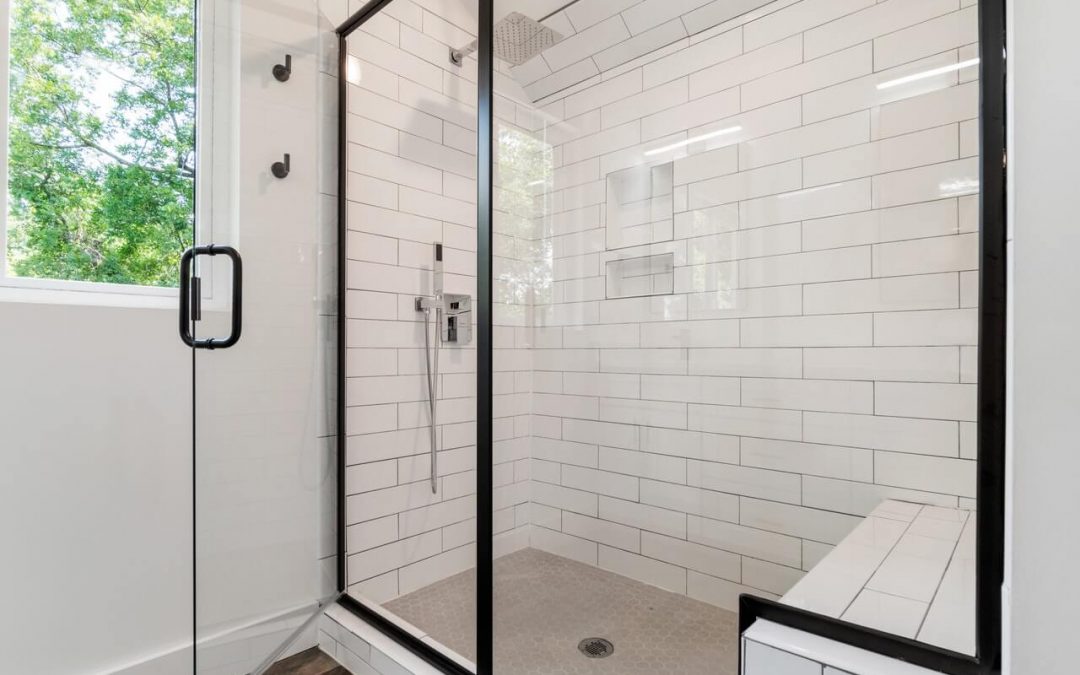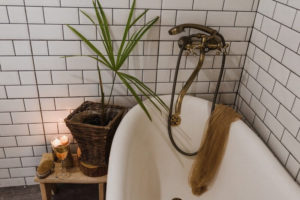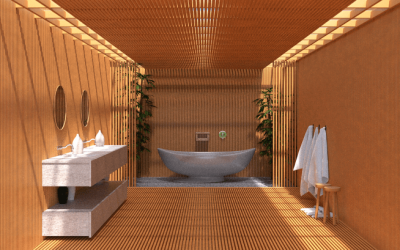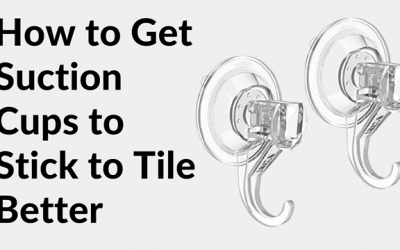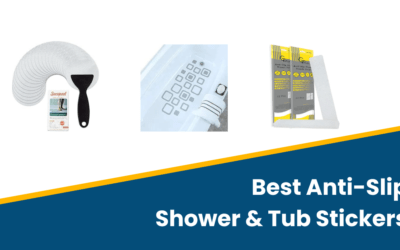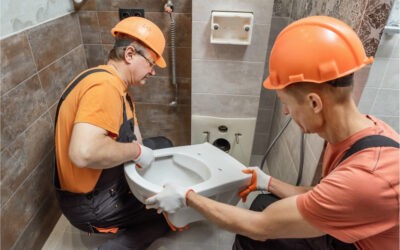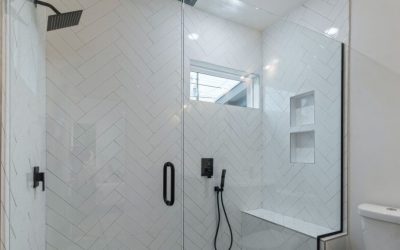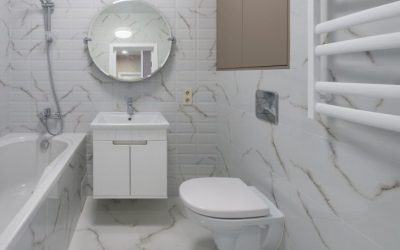Fiberglass-reinforced panels (FRP) are a popular choice for bathrooms and may be the perfect solution for you.
They are water-resistant, easy to clean, and much more affordable than tile. Also, they can be installed quickly and easily by anyone with basic handyman skills.
In this article, we will explain what FRP panels are and what they are used for. We will also provide tips on how to install them on the shower walls. So, whether you are considering using FRP panels for your next renovation project or just want to learn more about them, this article is for you.
What are FRP panels?
FRP panels are a kind of composite material made from fiberglass and resin.
They are used in a variety of applications, including as reinforcement in concrete, as building insulation, and as boat hulls.
FRP panels have a number of advantages over traditional materials like wood or metal.
They are relatively lightweight, yet strong; they are resistant to corrosion and weathering, and they can be molded into complex shapes.
As a result, they are increasingly being used in construction and other industries.
What are FRP panels used for?
FRP panels are used for a variety of applications including:
-Siding on homes and buildings
-Interior wall cladding like in bathrooms and kitchens
-Exterior wall cladding
-Furniture
-Roofs and ceilings
-Decorative panels
Can FRP be used for shower walls?
Yes, FRP can be used for shower walls. It’s a waterproof material that is resistant to mold and mildew, making it a good option for wet areas like showers.
In addition, it can be installed over existing surfaces like tile or drywall, or as a new wall surface.
Is FRP wall panel waterproof?
FRP wall panels are waterproof. They are made of fiberglass and resin, so they do resist water.
For this reason, they’re often used in wet areas like bathrooms and kitchens because they’re resistant to mold and mildew.
However, the seams between panels are not always waterproof, so it’s important to seal them properly.
See also: Shower niche problems
What size sheets does FRP come in?
FRP comes in a variety of sheet sizes, depending on the manufacturer.
Some common sizes include 4’x8′, 5’x10′, 5’x12′ and 6’x12′. The most common size is 4’x8′ but custom sizes are also available upon request.
So, if you have a specific size in mind for your project, be sure to check with your FRP supplier to see if they can accommodate you.
You can also find FRP in various thicknesses, ranging from 1/8″ to 1″.
How to cut FRP bathroom wall panels
There are a few ways to cut FRP bathroom wall panels, depending on what tools you have available.
For instance, if you have a table saw, you can use it to cut the panels.
Another way is to score the panel with a utility knife or box cutter and then snap it off. Scoring the panel first makes sure your cuts are clean and straight.
How to install FRP panels on shower wall?
FRP panels can be installed on shower walls using construction adhesive, silicone sealant, or screws and/or nails to attach them to the walls.
Whatever method you choose, this is the process to follow;
- Decide where you want to place the panels and use a level to draw a horizontal line. It’s important to make sure the line is level because the panels will be installed in a straight line.
- Use a sharp knife or blade to cut the FRP panel along the drawn line. Make sure you cut it evenly on both sides.
- Apply an adhesive strip to the back of the panel and then attach it to the wall, making sure it’s straight. Repeat this process for all of the panels that you want to install.
- Allow the adhesive time to dry before using the shower
What is the Best adhesive for FRP panels for bathroom?
There are a few different types of adhesives that can be used for FRP panels in bathrooms, but the best one to use depends on the specific situation.
For example, if the panels are going to be exposed to a lot of moisture, then an adhesive that is resistant to water would be a good choice.
Similarly, if the panels will be subject to high temperatures (such as in a steamy bathroom), then an adhesive that can withstand heat would be a better option.
Ultimately, it is important to choose an adhesive that is compatible with both the FRP panels and the surface you are attaching them to, in order to ensure a strong bond.
Some FRP adhesives to consider include;
- Titebond Greenchoice Fast Grab FRP adhesive provides a strong bond and is resistant to moisture.
- Loctite Power Grab All-Purpose Construction Adhesive also forms a strong bond and can stand up to wet conditions.
Whichever adhesive you choose, be sure to follow the manufacturer’s instructions for the best results.
How do you install FRP panels over plywood?
There are a few different ways to install FRP panels over plywood, but the most common method is to use mechanical fasteners.
This involves attaching the panels to the plywood using screws, nails, or bolts. You’ll need to drill pilot holes in the FRP panels before screwing them into place.
Another option is to adhesive-mount the FRP panels to the plywood. This can be done using construction adhesive or another type of strong glue.
How much does FRP installation cost?
FRP installation typically costs between $5 and $10 per square foot.
However, the price can vary depending on the type of FRP you choose and the size of the project.
For example, a small bathroom might only cost a few hundred dollars to install, whereas a larger commercial project could cost several thousand.
See also: Wood paneling in bathroom
FAQ about FRP Panels for shower walls
1. How much FRP adhesive do I need?
How much FRP adhesive you need will depend on the size of the project and how much adhesive you need to use.
You can always buy a little more or less depending on your specific needs. Be sure to follow the instructions on the adhesive bottle for the best results.
2. Can I install FRP with screws?
You can technically install FRP with screws, but it’s not recommended.
The material is designed to be installed with adhesive, so using screws could potentially damage the FRP or cause it to not adhere correctly.
Plus, it would be a lot more work than just using adhesive.
3. Can you staple FRP panels?
Yes, you can staple FRP panels.
However, it’s important to use the right type of staples and to make sure they’re properly spaced so that the panel isn’t damaged.
Also, be sure to use a hammer-type stapler rather than an electric one.
4. Can you glue FRP with Liquid Nails?
You can use liquid nails for FRP panels because it adheres strongly to most surfaces.
Liquid nails adhesive is a good adhesive for bonding wood, metal, and plastic. It’s important that you allow the glue to dry completely before putting any weight on the panel, as liquid nails adhesive is a very strong adhesive.
5. Can you put FRP on drywall?
FRP can be put on drywall but there are many factors to consider when deciding to do this.
For one, you need to make sure the drywall is in good condition and can support the weight of the FRP.
You also need to make sure that the adhesive you use is compatible with both the drywall and the FRP.
If you’re not sure whether it’s a good idea to put FRP on drywall or not, it’s always best to consult with a professional. They will be able to give you specific instructions on how to do it safely and effectively.
Conclusion
While you can use FRP panels for shower walls, there are a few things to keep in mind before making your purchase.
Make sure you select a panel that is moisture-resistant and can withstand high humidity levels.
Also be sure to check the weight rating of the panel, as heavier panels may be more difficult to install.
If you’re looking for a durable, low-maintenance option for your shower walls, FRP panels may be just what you need.

